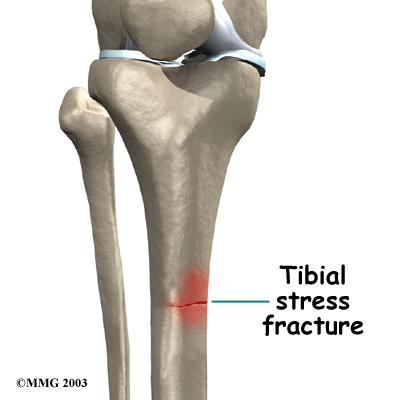

I was looking up "Common Lacrosse Injuries" on Google and I came across a link that led me to a forum. This girl was writing a paper for her Athletic Training class and he had to research Common Lacrosse Injuries. So she asked what the most common ones were. I looked over the list and the one that kept coming up was shin splints. So, I figured I would start there.
Shin splints are defined as pain along the front or inside edge of the shinbone (tibia). They are common among athletes who run and jump. Pain along the front of the tibia is called anterior shin splints, while pain along the inside of the tibia is called posterior shin splints.
Shin splints are usually the result of overuse. If an athlete hasn't trained in a while or hasn't done the exact thing that they are asked to do in a while, chances are they are going to get shin splints. Repeated movements of the foot can lead to the tibialis muscles pulling away from the bone. The injured muscle and the bone covering may become inflamed.
Anterior shin splints tend to happen to people who take up a new activity like jogging, sprinting or an activity that requires sudden starting and stopping. Running downhill can lead to and even bigger effect because the muscles in the lower leg have to control the planting of the foot which is more difficult when running downhill. People who run on the balls of their feet or who don't have good running shoes likely have a big problem with anterior shin splints.
Posterior shin splints likely result from imbalances in the leg and foot. Muscle imbalances from a tight calf muscle can lead to this problem. One major cause of posterior shin splints is having flat feet. As the foot flattens out, the posterior tibialis muscle gets stretched and will tug on its connection to the bone. The attachment eventually becomes damaged, leading to irritation; posterior shin splints.
A stress fracture in the tibia can have many of the same symptoms as shin splints, so it can be hard to differentiate between the two. A stress fracture is a crack in a weakened area of the bone. Continual stress from running on hard surfaces or from heavy strain on the muscles can lead to tibial stress fractures. People with shin pain who try to work through it can often develop a stress fracture.
One big issue surrounding shin splints is compartment syndrome. Compartment syndrome is when pressure from muscle damage and swelling builds up in a certain "compartment" of the body. As the pressure builds, the capillaries that bring blood to the area are squeezed shut. When the blood is not getting to the muscle, it can lead to a pain. like a muscle cramp. If the pressure continues to rise, it can lead to coldness, numbness, and swelling in the lower leg and foot. If the pressure builds up and is not treated, it can cause serious tissue damage in the leg and foot.
When someone is experiencing shin splints, they will often feel a dull ache where the muscles attach to the bone. Redness and swelling can also be found in this area. There might be small bumps or ridges along the part of the leg where the person is experiencing pain.
Diagnosis is usually made through physical examination. Reducing inflammation is the first step to fixing shin splints. This can be done with ice, rest, and taping of the shin. Iontophoresis can be used. It is when a small electrical current is used to push a steroid up the leg into the sore area. Ultrasound treatments and deep tissue massage can also be used.
Surgery is rarely needed to help shin splints. However, shin splints where there is also some compartment syndrome might need surgery, sometimes immediately.
No comments:
Post a Comment